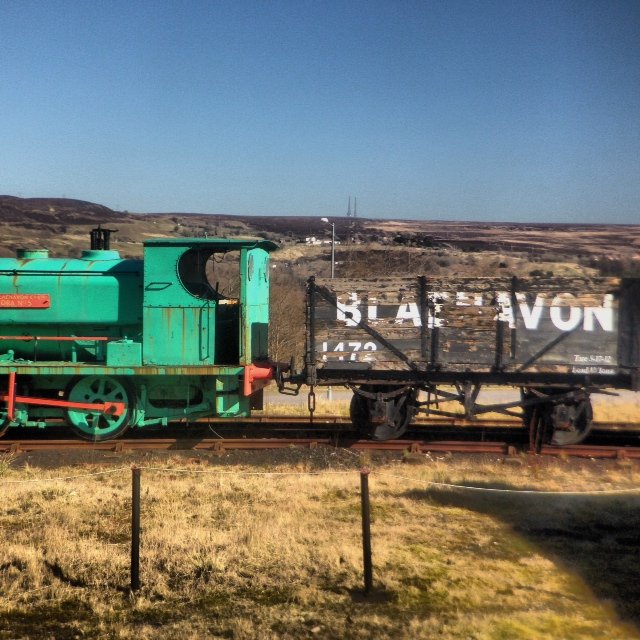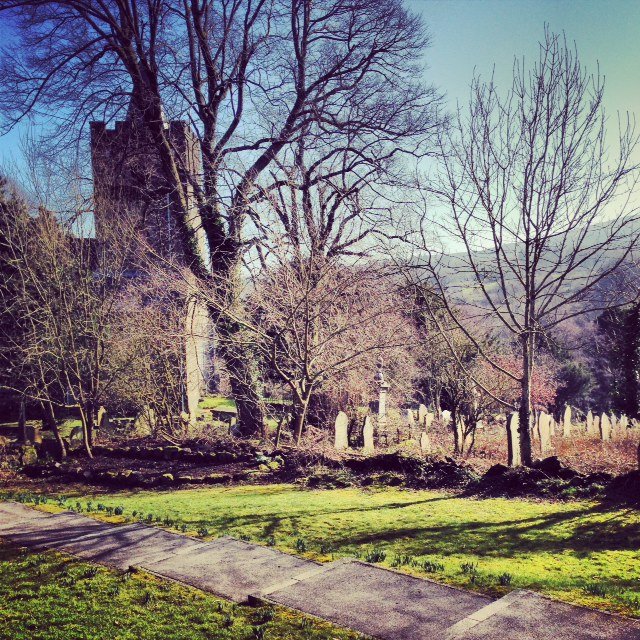Wales: Going down a coal mine

Visit Wales sent the Modern Family to The Valleys to see what they could discover and learn. As part of the trip we stopped by Blaenavon, a World Heritage Site which is the birthplace of the industrial revolution. A living historical jewel, Blaenvaon offers several places to visit (see list below). But the absolute MUST DO is Big Pit.
At its height, there were more than 600 colliers in Wales, producing more than 60 millions tons of “black diamonds”. Hugely important in shaping modern Wales, the coal industry has pretty much disappeared. Big Pit in Blaenavon tells the fascinating story of coal mining and what it was like to work in such harsh coal mining conditions.
The best part is experiencing mining yourself! You can don a helmet, cap lamp, belt and “self rescuer” and descend 300 feet into the heart of the mine for a 50-minute tour with an ex-miner. The tour pays special attention to children, capturing their imagination by having them relate to the child workers. At one point our tour guide had us turn out all the lights to see what it would be like when lighting failed, which it often did for the 5-year-old “trappers”. And he had my 10-year-old daughter help carry coals (which could easily have been her job 100 years ago). It’s easy to see why Big Pit is one of Wales’s biggest tourist attractions. Plus, it’s FREE!

Designated a World Heritage Site by UNESCO in 2000, Blaenavon is recognized internationally for the leading role the town played in the Industrial Revolution in the 19th Century. From producing iron at Blaenavon Ironworks, so key to fueling this period in history, to the production of coal, the town is a perfect place to learn what was like to live in a mining community. Start at the Heritage Centre, fully restored school building, and then use the app to take you on a short walk around the town, guided by town residents.

My 10-year-old’s point of view:
We went to the Big Pit and learnt that 72 horses were kept to pull the heavy coal. Children and women also did that too. The horses stayed underground for about 6 years until the worker that looked after the horse went on holiday so the horse did not starve. The also had to put a thing to cover their eyes because they have been in darkness for so long.
I also learned that 5 and 6 year olds called trappers were hired to open and close the doors. They worked for 12 hours a days and got 2p. In about 1860 they changed the law so children had to be 10 or older.
Overall I think the Big Pit is a wonderful and I think I will remember it for a long, long time!

IF YOU GO:
Big Pit National Coal Museum Blaenafon, Torfaen NP4 9XP + 44 029 2057 3650 www.museumwales.ac.uk Don a helmet, cap lamp, belt and “self rescuer” and descend 300 feet into the heart of the mine for a 50-minute tour with an ex-miner. The tour pays special attention to children, capturing their imagination by having them relate to the child workers. It’s easy to see why Big Pit is one of Wales’s biggest tourist attractions. FREE.
Blaenavon World Heritage Centre Church Rd, Blaenavon, Torfaen NP4 9AS +44 01495 742333 www.visitblaenavon.co.uk Designated a World Heritage Site by UNESCO in 2000, Blaenavon is recognized internationally for the leading role the town played in the Industrial Revolution in the 19th Century. The town is a perfect place to learn what was like to live in a mining community. Start at the Heritage Centre, fully restored school building, and then use the app to take you on a short walk around the town, guided by town residents.
Blaenavon Ironworks N Street, Blaenavon, NP4 9RN +44 01495 792615 This ironworks is the birthplace of the Industrial Revolution!
Pontypool and Blaenavon Railway 80 Broad St, Blaenavon, Pontypool, Gwent NP4 9NF Walk through the steam as you board a real steam engine! You can disembark at Big Pit, Ironworks, the Heritage Centre and Whistle Inn, the highest railway station in England and Wales. Contact the Tourist Information Centre for operating times.
Heritage Tea Rooms. Church Rd, Blaenavon, Torfaen NP4 9AS +44 01495 742333 www.visitblaenavon.co.uk After your walk tour, while not pick up a light bite or Welsh cake in the tea shop. If the weather is nice, sit outside overlooking the picturesque St Peter’s Church.

My 9-year-old’s point of view:
I went to the Big Pit, a coal mine in Wales.
I learned that children as young as 5 and 6 worked in the mine for up to 14 hours a day, 5 days a week. They are called trappers and they hold the door open for coal and coal miners to get through in the dark with only a candle for light. The 10 year olds shovel coal into carts for their dads. In 1860 you had to be at least 10 to be a trapper.
They had 72 horses to help carry coal and they stayed under ground. The only time they came up was then the person who looked after them was on holiday. Since the horses lived in darkness and was used to it, they had to put a cloth on the horse’s eyes so it wouldn’t be blinded by the light.
The coal miners brought a canary down into the mines because it senses methane gas quicker than humans do.
It was very nice and I enjoyed it very much!

Note: Our activities were provided by Visit Wales for the purposes of this review. All opinions are my own and my family’s.


Jo Sandelson | 30th Jun 16
Blimey those poor horses. It sounds like your little ones had a fascinating time – will put it on the list of places to visit if we go to visit our friends in Wales this summer. Jo
Claire Diary of the Evans-Crittens | 16th May 14
I love Big Pit! It’s about three hours from me and I’m in Wales lol. Taken lots of school trips there and my family once but need to go there soon!
Trish @ Mum's Gone To | 28th Mar 14
Amazing that such a great experience was free. Your girls look and sound enthralled.
Loving these posts on Wales.
Fourerr (@fourerr) | 28th Mar 14
Hi Susanna, this trip does not only looked fun but educational as well.I loved it when you shared in this post your 2 girls opinion/observation on this trip. Good job on making these pretty girls lovely, smart, and sensitive!
Michelle Twin Mum | 22nd Mar 14
Gosh your girls look like you Susanna. What an interesting visit to make, I’ll keep it in mind if we are ever off to Wales. Mich x
Susanna | 23rd Mar 14
Highly recommend, plus it’s only about 2 hours from London!
Mums do travel | 22nd Mar 14
This sounds like a fascinating trip. I didn’t realise that such young children worked in the mines in Wales.
Susanna | 23rd Mar 14
The law was changed about 100 years ago, but it was really grim way back when. When they law changed, you had to be at least 10 to work!
Stacey Corrin | 22nd Mar 14
Ooh this looks like my kinda thing! Looks like you had a really great time and what a wonderful way to teach children about the coal mining industry in a very hands-on fashion. Can just imagine my three running amok down there!
Susanna | 23rd Mar 14
They also talk a lot about keeping horses down in the mines, and you see the underground stables. Fascinating. Kids just love it.